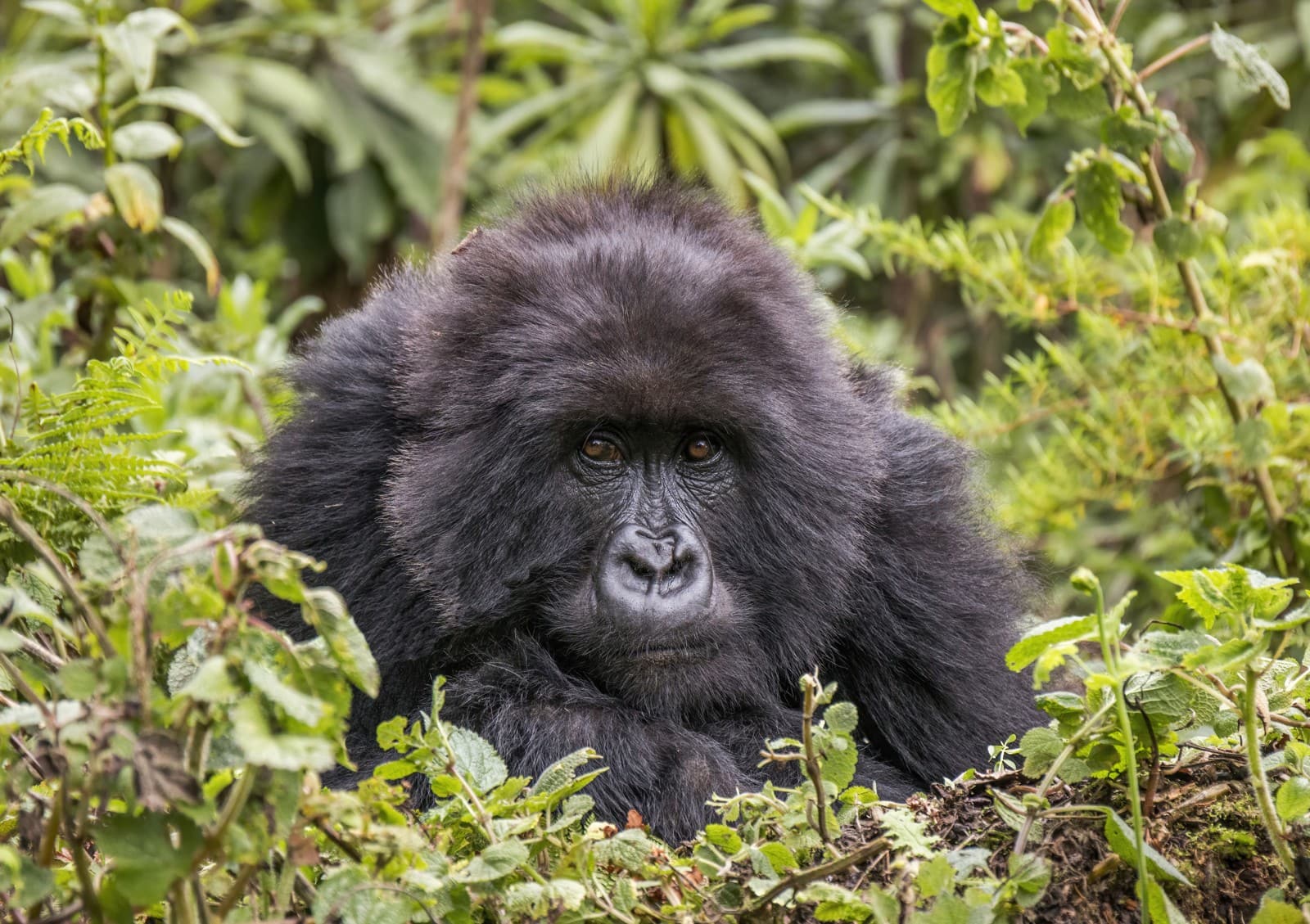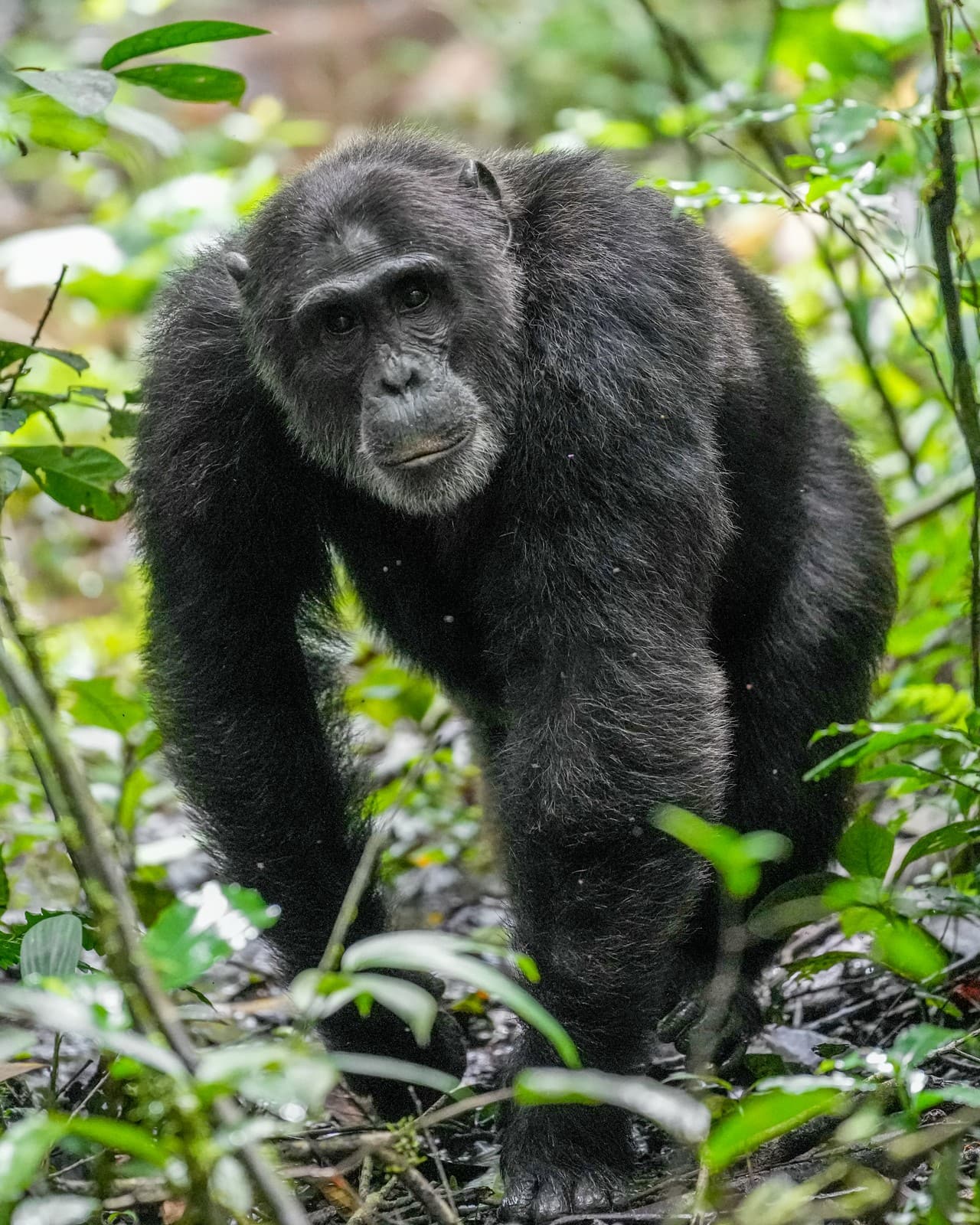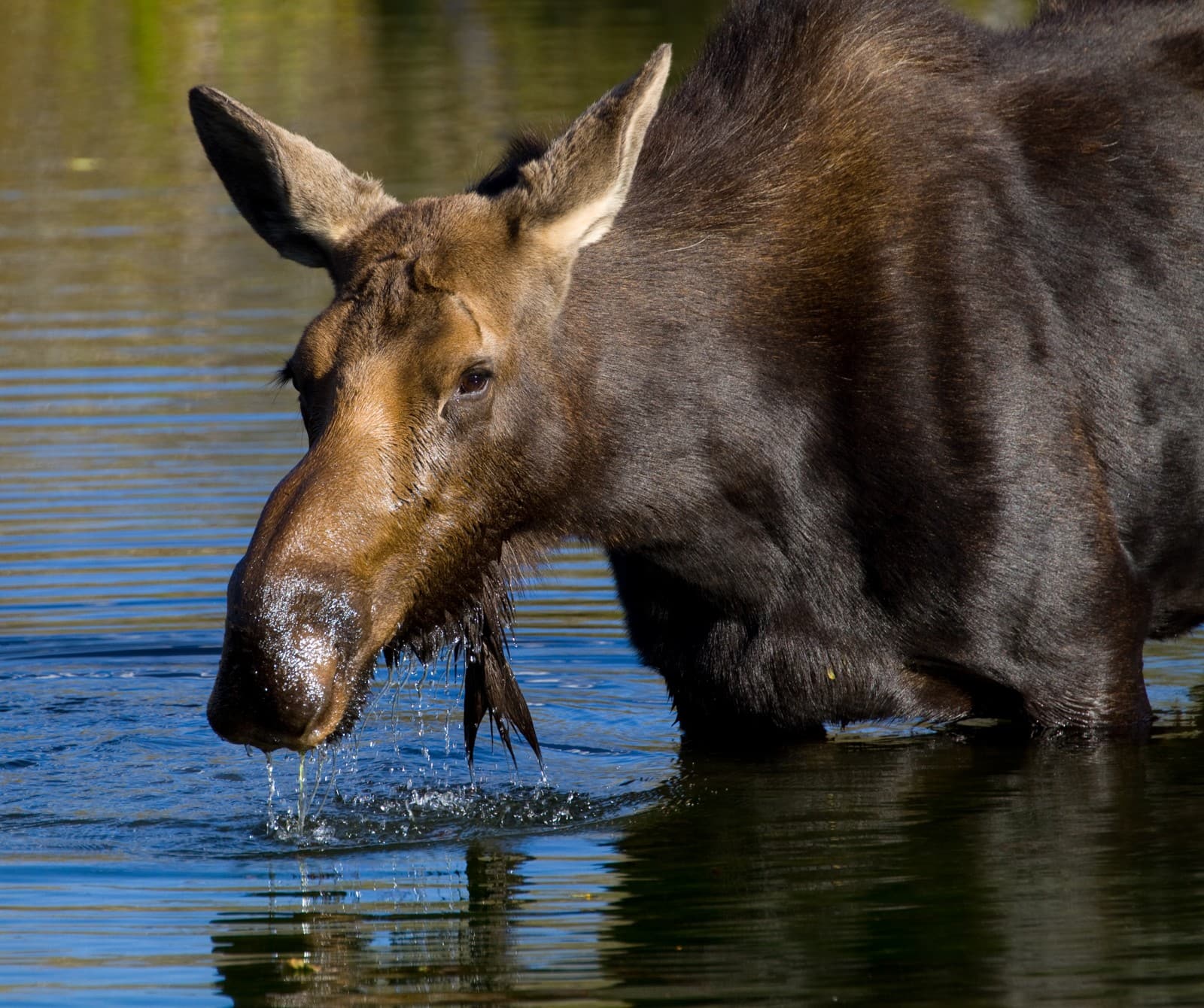Chimpanzee vs Bonobo: A Complete Comparison
Despite sharing 98.7% of their DNA with each other, Chimpanzees and Bonobos exhibit remarkable differences in behavior, physiology, and social structure. While both species split from a common ancestor approximately 1.5-2 million years ago, they evolved distinct characteristics that make each unique. Chimpanzees typically display more aggressive social behaviors and are larger in size, weighing 88-130 pounds (40-60 kg), while Bonobos are generally more peaceful and slightly smaller, weighing 68-86 pounds (31-39 kg).
The Chimpanzee vs Bonobo comparison reveals fascinating contrasts in how our closest living relatives navigate their world. While Chimpanzees form hierarchical societies led by dominant males, Bonobos maintain matriarchal groups where females hold primary social influence. These differences extend far beyond simple social structures, affecting everything from their physical appearance to their problem-solving approaches.
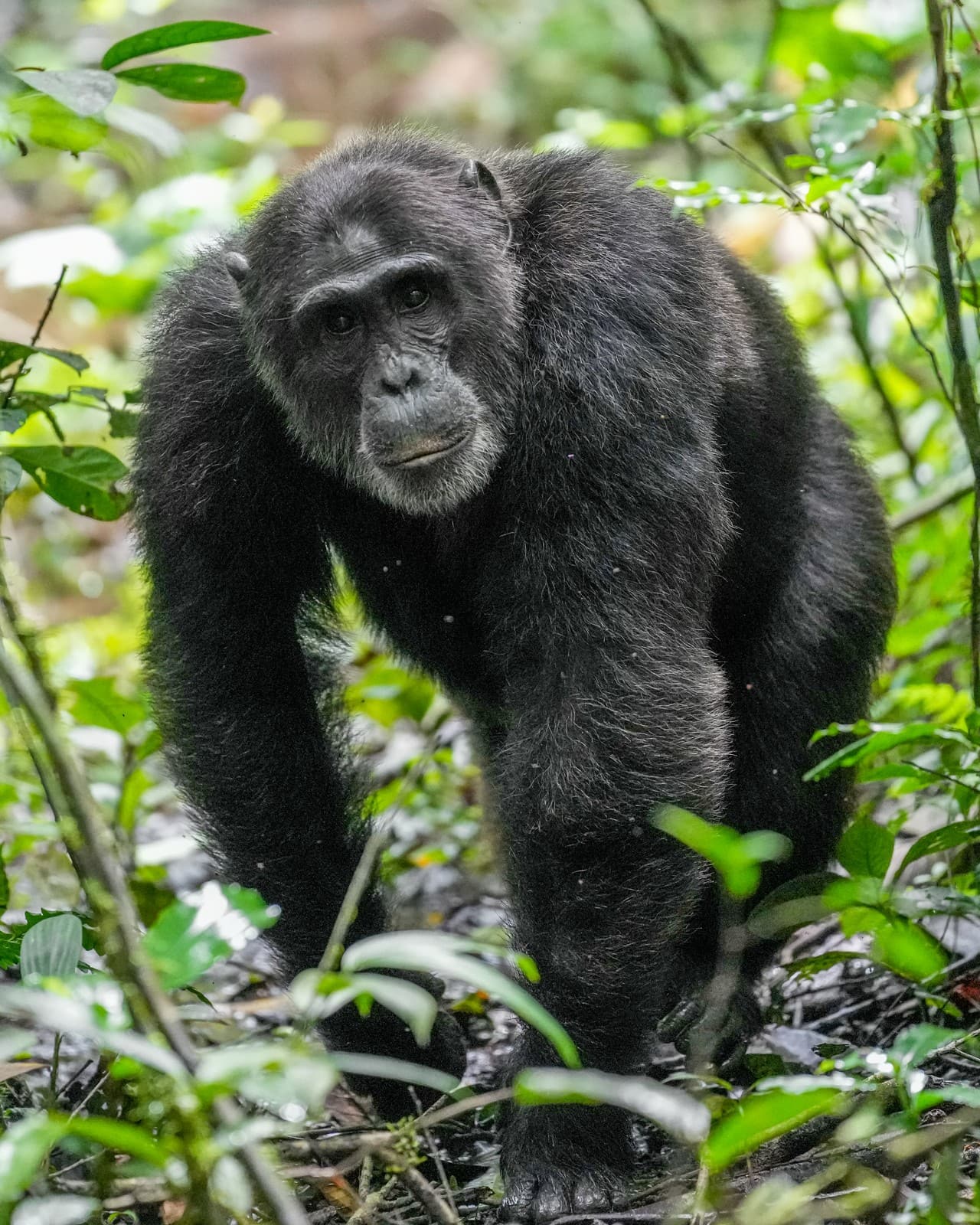
© Giles Laurent / CC BY-SA 4.0
A mature Chimpanzee displays the species’ characteristic robust build and muscular frame, traits that distinguish them from their Bonobo cousins. Note the powerful shoulders and arms, adaptations that enable their impressive strength and agile movement through forest canopies.
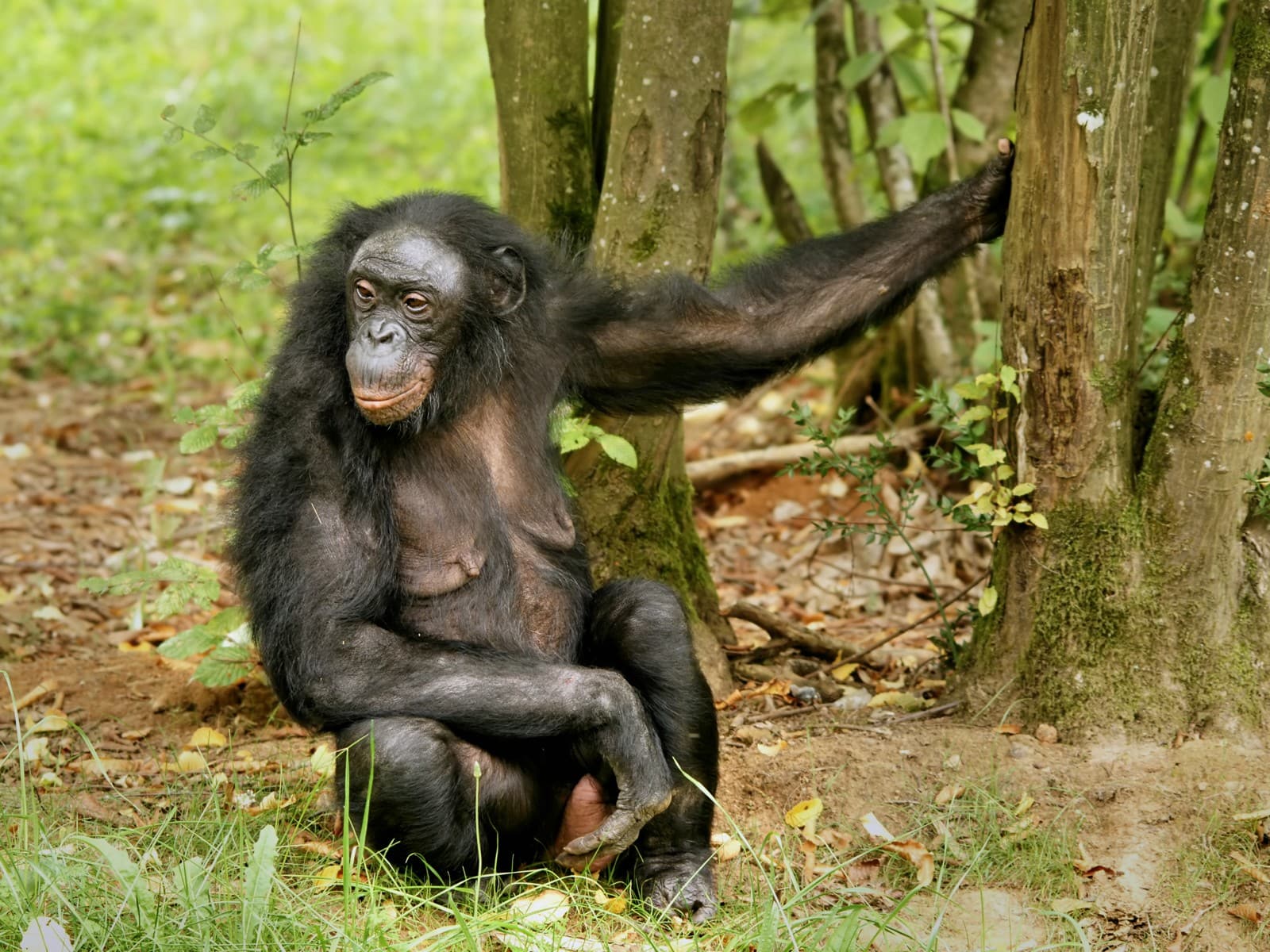
© Hans Hillewaert / CC BY-SA 4.0
The Bonobo exhibits the species’ more gracile build and characteristic facial features. Notice the longer limbs and more slender frame compared to Chimpanzees, along with the distinctive pink lips and longer hair parting.
Key Physical and Behavioral Differences
| Feature | Chimpanzee | Bonobo |
|---|---|---|
| Body Size | 88-130 lbs (40-60 kg) | 68-86 lbs (31-39 kg) |
| Face Color | Black | Pink lips, black face |
| Social Structure | Male-dominated, hierarchical | Female-led, egalitarian |
| Aggression Level | Higher, territorial | Lower, more peaceful |
| Geographic Range | West & Central Africa | Democratic Republic of Congo only |
| Problem Solving | Tool-focused approach | Social cooperation approach |
Habitat and Distribution
Chimpanzees and Bonobos are separated by the Congo River, which has played a crucial role in their divergent evolution. Chimpanzees inhabit a diverse range of habitats across 21 African countries, from dense rainforests to woodland savannas. Bonobos, however, are found exclusively in the Democratic Republic of Congo, confined to the humid forests south of the Congo River.
Social Behavior and Intelligence
The most striking difference between Chimpanzee vs Bonobo social structures lies in their conflict resolution strategies. Chimpanzees often resolve disputes through displays of aggression and physical confrontation, while Bonobos typically defuse tensions through social bonding and sexual behavior. Both species demonstrate remarkable intelligence, though they approach problem-solving differently:
- Chimpanzees excel at tool use and show more territorial behavior
- Bonobos display greater empathy and social cooperation
- Both species exhibit complex emotional understanding
- Bonobos show more food-sharing behavior
- Chimpanzees demonstrate stronger hunting instincts
Physical Characteristics
While closely related, several physical features distinguish these great apes:
- Face shape: Chimpanzees have broader, more robust faces
- Body build: Chimpanzees are more muscular; Bonobos are more gracile
- Hair pattern: Bonobos have longer, more parted hair on their heads
- Vocalization: Bonobos have higher-pitched calls than Chimpanzees
- Limb proportions: Bonobos have relatively longer legs and more slender arms
Conservation Status and Threats
Both species face significant challenges in the wild:
- Chimpanzees: Endangered, with 172,000-300,000 individuals remaining
- Bonobos: Endangered, with only 10,000-50,000 individuals left
- Main threats include habitat loss, poaching, and disease
- Bonobos face additional risks due to their limited geographic range
- Both species require urgent conservation action to ensure survival
Who Would Win in a Direct Confrontation?
While such encounters don’t occur in nature due to geographic separation, a Chimpanzee would likely dominate a physical confrontation due to:
- Greater muscle mass and upper body strength
- More aggressive temperament
- Larger body size
- More experience with confrontational behavior
- Stronger bite force
However, it’s important to note that such comparisons oversimplify the complex nature of these remarkable species, each adapted perfectly to their specific ecological niches and social systems.
